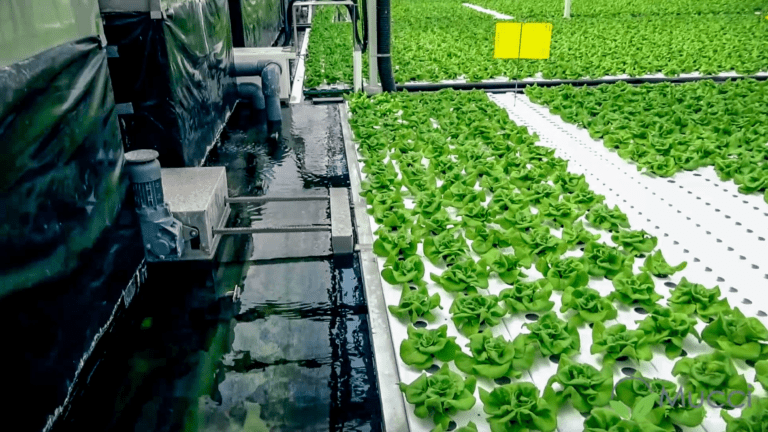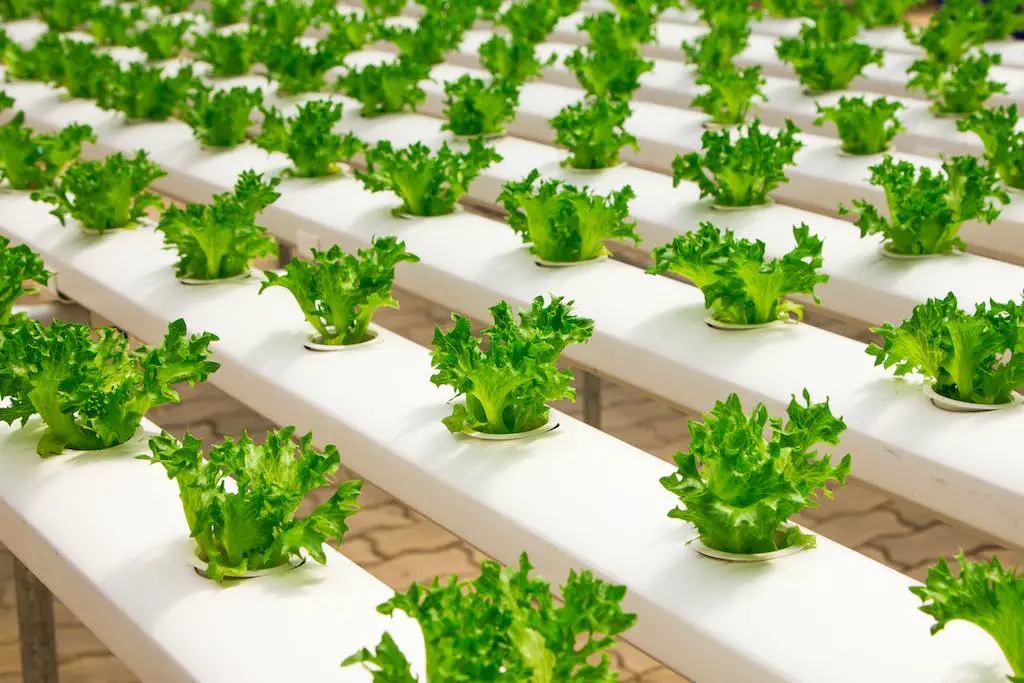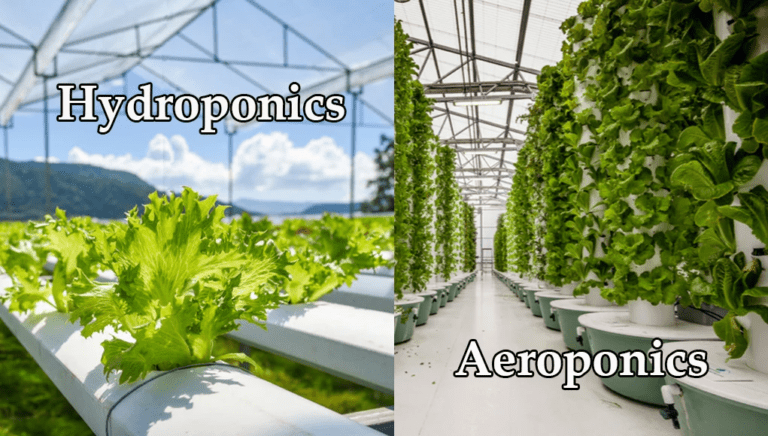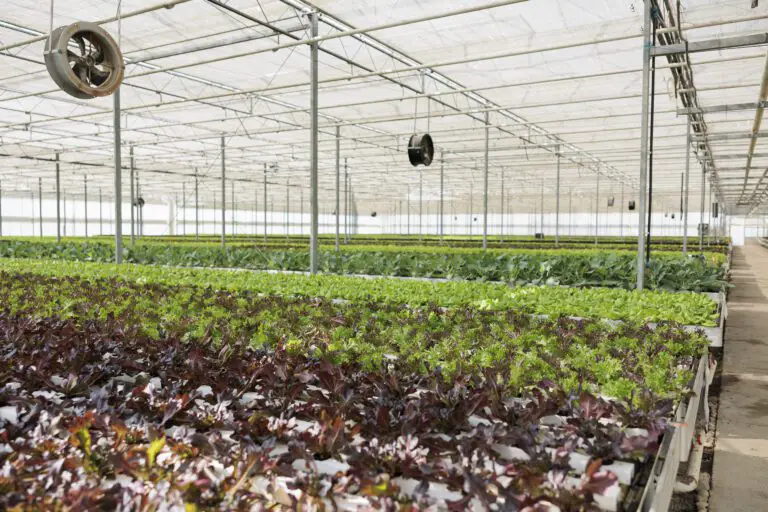How to Create a Sustainable Hydroponic Garden for Long-Term Success: 9 Useful Tips
If you’re looking for a way to grow your own food without the hassle of soil, weeds, and pests, hydroponics might be the answer. Hydroponics is a method of growing plants in water and nutrients, instead of dirt. It’s like giving your plants a spa treatment, while you enjoy the fruits (and veggies) of your labor. But hydroponics is not all roses and rainbows. It also requires some skill and knowledge to keep your plants happy and healthy. In this article, we’ll give you 9 useful tips on how to create a sustainable hydroponic garden that will last for years and feed your family.
Table of Contents
Understanding the Basics of Sustainable Hydroponic: A Brief Overview

Hydroponics, a method of growing plants without soil, has gained popularity in recent years due to its numerous advantages. By providing plants with the necessary nutrients directly through a nutrient-rich solution, hydroponics allows for precise control over growing conditions, resulting in faster growth rates and higher yields compared to traditional soil-based gardening.
One of the key benefits of hydroponics is the conservation of water. Unlike traditional gardening, which requires substantial amounts of water to keep the soil moist, hydroponics recycles and reuses water efficiently. This makes it an ideal option for regions facing water scarcity or for individuals looking to reduce their water consumption.
Furthermore, hydroponics eliminates the need for pesticides and herbicides, as the controlled environment helps prevent diseases and pests from attacking the plants. This not only reduces the reliance on harmful chemicals but also helps produce healthier and more nutritious crops.
Moreover, hydroponics offers flexibility in terms of location. As it does not rely on fertile soil, it can be set up in any indoor or outdoor space, making it suitable for urban environments or areas with limited access to arable land. Additionally, this method allows for year-round cultivation, enabling growers to enjoy fresh produce even in colder climates or during off-seasons.
In the next sections, we will explore various aspects of hydroponics in greater detail, including selecting the ideal location, choosing the right hydroponic system, and ensuring proper lighting and nutrient solutions. Join us as we delve deeper into the world of hydroponics and learn how it can revolutionize your gardening experience.
Key Points
Selecting the Ideal Location for Your Sustainable Hydroponic Garden
When it comes to selecting the ideal location for your hydroponic garden, there are several key factors that you need to consider. First and foremost, you want to ensure that your chosen location receives ample sunlight throughout the day. Most plants require at least 6-8 hours of direct sunlight to thrive, so it’s crucial to find a spot that isn’t shaded by buildings, trees, or other structures.
In addition to sunlight, you should also evaluate the accessibility of your chosen location. Ideally, you want a spot that is easy to access for regular maintenance tasks such as watering, pruning, and harvesting. It’s also important to keep in mind that hydroponic systems require a stable water source, so selecting a location near a water supply can save you time and effort in the long run. Lastly, consider the size and layout of your chosen space. Ensure that it can accommodate the size and quantity of hydroponic systems you plan to install, as well as any additional equipment or storage needs. Taking these factors into account will help set your hydroponic garden up for success and ensure optimal growing conditions for your plants.
Key Points
Choosing the Right Sustainable Hydroponic System for Your Needs
When it comes to choosing the right hydroponic system for your needs, it’s important to consider several factors that will contribute to the success and efficiency of your garden. One of the main considerations is the type of plants you plan to grow and their specific requirements. Different plants thrive under different conditions, and certain hydroponic systems are better suited for specific types of plants. For example, nutrient film technique (NFT) systems are ideal for leafy greens, while deep water culture (DWC) systems are more suitable for larger plants with extensive root systems.
Another important factor to consider is your level of experience and the amount of time you can devote to maintenance. Some hydroponic systems require more hands-on care and monitoring, while others are more automated and self-sufficient. If you’re a beginner or have a busy schedule, you may want to opt for a system that is easier to set up and requires less maintenance, such as an ebb and flow or a drip irrigation system. On the other hand, if you have more experience and enjoy a more hands-on approach, you might choose a system like aeroponics or a vertical tower system.
Ultimately, the right hydroponic system for your needs will depend on your specific goals, preferences, and resources. By considering factors such as the types of plants you want to grow, your level of experience, and the amount of time you can commit to maintenance, you can make an informed decision and set yourself up for success in your hydroponic garden.
Key Points
Selecting the Best Growing Medium for Your Sustainable Hydroponic Garden
The selection of the best growing medium for your hydroponic garden is a critical step in ensuring the success of your plants. The growing medium serves as a support structure for the roots and aids in nutrient uptake. There are several factors to consider when choosing the right medium for your garden.
One of the most popular choices for hydroponic systems is rockwool. Made from natural volcanic rock, rockwool provides excellent water retention and aeration capabilities while offering good support to the plants. It is also easy to handle and can be reused, making it a cost-effective option.
Another common option is perlite, a lightweight volcanic mineral that promotes good drainage and aeration. Perlite is known for its insulation properties, preventing root temperature fluctuations. It is also sterile, reducing the risk of disease and pests in your garden.
Coconut coir is gaining popularity as it is a sustainable and renewable resource. This fibrous material retains moisture well while allowing adequate oxygenation for root development. It also has excellent water holding capacity, reducing water usage in your hydroponic garden.
Alternatively, clay pebbles, also known as hydroton, are a popular choice for their excellent drainage properties. They serve as a stable medium for plant roots and provide good aeration. Clay pebbles are reusable and can be easily cleaned and sterilized.
By carefully considering the properties of each growing medium, you can choose the one that suits your Sustainable hydroponic garden’s specific requirements and ensures optimal plant growth.
Key Point
Providing Adequate Lighting for Optimal Plant Growth and Sustainable Hydroponic
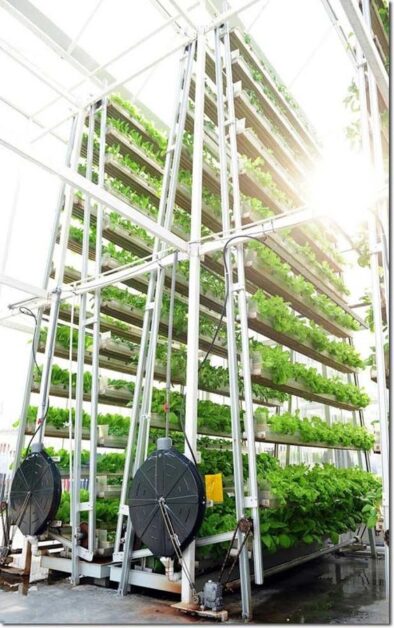
When it comes to Sustainable hydroponic gardening, providing adequate lighting is essential for optimal plant growth. Unlike traditional gardening methods that rely on natural sunlight, hydroponic systems require artificial lighting to ensure plants receive the right amount and quality of light they need to thrive.
One popular option for providing lighting in a Sustainable hydroponic garden is the use of LED grow lights. LED lights are highly efficient and provide a spectrum of light that closely mimics natural sunlight. This means that plants can get the specific wavelengths they need for photosynthesis, resulting in healthier and more productive growth. LED lights also produce less heat compared to other lighting options, reducing the risk of damaging plants or causing temperature imbalances in the hydroponic system.
Another option for hydroponic lighting is high-intensity discharge (HID) lights, such as metal halide (MH) and high-pressure sodium (HPS) lights. HID lights are known for their ability to deliver intense light output, making them suitable for larger Sustainable hydroponic setups. However, they generate more heat compared to LED lights and often require additional ventilation to maintain optimal temperature and humidity levels.
Regardless of the lighting system you choose, it’s crucial to provide a consistent light schedule for your plants. Most leafy greens and herbs require about 14-16 hours of light per day, while flowering crops may need 12 hours of light and 12 hours of darkness to trigger the blooming process. Investing in a timer can help automate the lighting schedule, ensuring your plants receive the right amount of light at the right time.
In the next section, we’ll explore the importance of maintaining the proper nutrient solution for healthy plants in your hydroponic garden.
to maintain optimal temperature and humidity levels.
Maintaining the Proper Nutrient Solution for Healthy Plants Sustainable Hydroponic
When it comes to hydroponic gardening, maintaining the proper nutrient solution is crucial for the health and vitality of your plants. Unlike traditional soil-based gardening, where plants obtain nutrients from the soil, hydroponic systems rely on a carefully balanced nutrient solution that contains all the necessary elements plants need to thrive.
To maintain a healthy nutrient solution, it is important to monitor the nutrient levels regularly. This can be done through regular testing using a pH meter and an electrical conductivity (EC) meter. These tools will help you determine the pH level and the concentration of dissolved nutrients in your solution. Adjusting the nutrient solution’s pH level is essential because it affects the availability of nutrients to the plants. Most hydroponic plants thrive in a pH range of 5.5 to 6.5, although this may vary depending on the specific plant species. By monitoring and adjusting the pH levels, you can ensure that the nutrients in the solution are readily absorbed by the plants, promoting healthy growth and development.
Additionally, it is important to replenish the nutrient solution regularly. As plants grow, they absorb nutrients from the solution, gradually depleting its concentration. To maintain the proper nutrient balance, it is essential to periodically replace the solution with a fresh batch. The frequency of solution changes will depend on factors such as the size of your hydroponic system and the types of plants you are growing. It is generally recommended to change the nutrient solution every one to two weeks to ensure optimal plant health.
By maintaining the proper nutrient solution in your hydroponic system, you can provide your plants with the essential elements they need for robust and healthy growth. Regular monitoring, testing, and adjustment of pH levels, as well as replenishing the solution, will help support the nutrient requirements of your plants, optimizing their growth potential and overall yield.
Key Points
Managing pH Levels in Your Sustainable Hydroponic System
Maintaining the proper pH levels in your hydroponic system is essential for the healthy growth of your plants. pH refers to the acidity or alkalinity of your nutrient solution, and it plays a crucial role in nutrient availability and uptake by the plants’ roots. The ideal pH range for most hydroponic crops is between 5.5 and 6.5, as this range promotes optimal nutrient absorption.
To manage pH levels effectively, it is important to regularly monitor and adjust the nutrient solution. This can be done using a pH meter or test strips specifically designed for hydroponic systems. If the pH is outside the desired range, adjustments can be made by adding either pH up (alkaline) or pH down (acidic) solutions.
Maintaining a stable pH is crucial because fluctuations can lead to nutrient imbalances and hinder plant growth. High pH levels can result in nutrient deficiencies, particularly in iron, calcium, and manganese, while low pH levels can lead to toxicity issues with certain elements like aluminum and manganese. Regularly testing and adjusting the pH will ensure that your plants receive the proper balance of nutrients for optimal growth and development.
In the next section, we will explore the importance of establishing an effective ventilation system for your hydroponic garden.
Key Points
Establishing an Effective Ventilation System for Your Garden
Establishing an effective ventilation system is an essential aspect of creating a thriving hydroponic garden. Adequate air circulation is crucial for the overall health and growth of your plants. Without proper ventilation, your garden can become a breeding ground for pests and diseases, leading to stunted growth and poor yields.
One key benefit of a well-designed ventilation system is the regulation of temperature and humidity levels. High temperatures can cause stress on plants, while excessive humidity can promote the growth of mold and mildew. By introducing fresh air and removing stagnant air, you can maintain optimal conditions for your plants to thrive.
To achieve an effective ventilation system, consider incorporating fans and vents strategically around your garden. Place fans near the top of the grow area to ensure proper air circulation and prevent hot spots. Additionally, installing intake vents near the bottom and exhaust vents near the top will facilitate the exchange of indoor and outdoor air.
By implementing an efficient ventilation system, you are taking a proactive approach to prevent potential issues and create an ideal environment for your hydroponic garden to flourish. Remember to regularly monitor and adjust the settings of your ventilation system as per the specific needs of your plants and environmental factors. Together with other crucial factors such as lighting, nutrient solution, and pest control, a well-ventilated garden will pave the way for healthy plants and abundant yields.
Key Points
Controlling Temperature and Humidity for Optimum Plant Growth Sustainable Hydroponic
Temperature and humidity are crucial factors that directly impact the growth and development of plants in a hydroponic system. Maintaining the ideal temperature and humidity levels is essential to ensure optimal plant growth and productivity.
When it comes to temperature, it’s important to provide a suitable environment for the plants. Most commonly, temperatures ranging between 65°F and 75°F (18°C and 24°C) are considered ideal for most hydroponic crops. However, it’s worth noting that different plants thrive in different temperature ranges. For example, leafy greens generally prefer cooler temperatures, while fruiting plants like tomatoes and peppers thrive in slightly warmer conditions.
To control the temperature effectively, you can utilize various methods such as ventilation systems, cooling devices, and insulation materials. Implementing an efficient ventilation system can help remove excess heat and regulate airflow, whereas cooling devices like fans or air conditioners can be used to lower the temperature in the growing area. Additionally, using insulation materials like reflective films or shades can help maintain optimal temperatures by reducing heat loss. Monitoring the temperature regularly and making necessary adjustments will ensure that the plants are provided with the most suitable climate for their growth.
When it comes to humidity levels, it’s important to strike a balance between too much and too little moisture in the air. High humidity can lead to increased moisture levels, which can create a favorable environment for fungal diseases and pest infestations. On the other hand, low humidity can result in excessive transpiration and water loss from the plants, leading to stunted growth and wilting.
For most hydroponic crops, maintaining humidity levels between 50% and 70% is generally considered optimal. Achieving this can be done by utilizing humidifiers or dehumidifiers to adjust the moisture content in the air. Moreover, proper ventilation can also help regulate humidity levels by allowing excess moisture to escape and fresh, dry air to circulate. Regular monitoring and adjustment of humidity levels will help ensure that the plants receive the right amount of moisture for healthy growth.
In summary, controlling temperature and humidity are crucial aspects of maintaining an optimal growing environment for hydroponic plants. By providing the right combination of temperature and humidity, you can create the ideal conditions for your plants to thrive and produce bountiful harvests. Regular monitoring and adjustment of these factors will ensure that your Sustainable hydroponic garden remains a healthy and productive space for your beloved plants.
Key Point
Preventing and Managing Pest Infestations in a Sustainable Hydroponic Garden
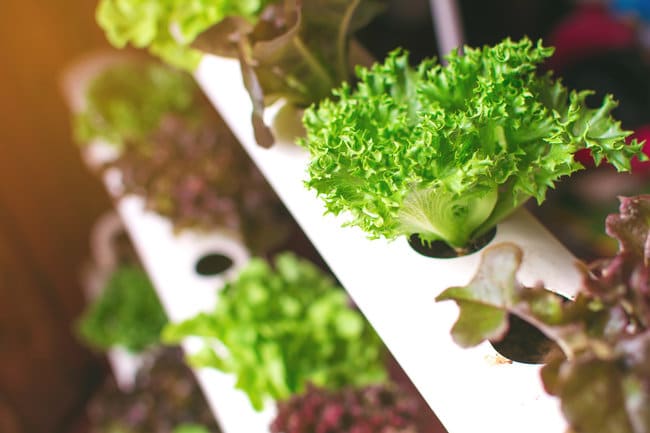
Preventing and managing pest infestations in a hydroponic garden is crucial for maintaining the health and productivity of your plants. While hydroponic systems offer a controlled environment that reduces the risk of pests, it is still important to implement proactive measures to prevent infestations from occurring.
One effective method for preventing pest infestations is to practice strict cleanliness and sanitation protocols in your Sustainable hydroponic garden. Regularly inspect and clean your system to remove any debris or organic matter that could attract pests. Additionally, ensure that your garden area is free from standing water, as this can serve as a breeding ground for various pests.
Another essential step in preventing pests is to establish biological controls. These include introducing beneficial insects, such as ladybugs and predatory mites, which will naturally prey on pests like aphids and spider mites. You can also incorporate natural pest control products, such as neem oil or insecticidal soaps, which are derived from botanical sources and are less harmful to your plants and the environment.
By incorporating these preventative measures into your Sustainable hydroponic garden, you can greatly reduce the risk of pest infestations. However, if an infestation does occur, it is important to have a plan in place to effectively manage and control the pests. In the next section, we will explore strategies for managing pest infestations in your hydroponic garden.
Key Point
Ensuring Sufficient Oxygenation for Healthy Root Development Sustainable hydroponic
To ensure the healthy development of roots in your Sustainable hydroponic garden, it is crucial to provide sufficient oxygenation. The roots of plants require oxygen to carry out cellular respiration, which is essential for energy production and overall plant growth. Insufficient oxygen levels can lead to root suffocation, nutrient uptake issues, and plant stress.
One effective method to promote oxygenation is by implementing an aeration system in your hydroponic setup. This can be achieved through the use of air pumps, air stones, or diffusers. These devices introduce air bubbles into the nutrient solution, increasing oxygen levels and promoting aeration. By ensuring a constant supply of oxygen to the roots, you create an optimal environment for root health and growth.
Another important factor to consider is the choice of growing medium. Some growing mediums, such as perlite or expanded clay pellets, provide better oxygenation to the root zone compared to others. These porous mediums allow for increased air circulation and can help maintain healthy oxygen levels for the roots. It is important to choose a growing medium that balances water retention with adequate drainage, ensuring that roots receive the right amount of oxygen without becoming waterlogged.
Key Point
Monitoring and Adjusting Nutrient Levels Regularly Sustainable Hydroponic
Monitoring and adjusting nutrient levels regularly is a fundamental practice in hydroponic gardening that ensures the optimal growth and health of your plants. Proper nutrition is essential for plants to thrive in a soil-less growing environment, and maintaining the right balance of nutrients is crucial for their overall development.
Regular monitoring allows you to assess the nutrient levels in your hydroponic system and make necessary adjustments to meet the specific requirements of different plant species. To ensure accuracy, it is recommended to use reliable testing kits or meters to measure the nutrient concentration in your solution. Monitoring should be done at least once a week, or more frequently for crops with higher nutrient demands.
Once you have obtained accurate readings, adjusting the nutrient levels becomes the next step. This can be done by adding the appropriate amount of nutrient solution to raise the levels, or by diluting the solution to lower them. It is essential to follow the recommended guidelines for each nutrient, as excessive or insufficient amounts can harm your plants. Additionally, tracking and recording the adjustments made will provide valuable insights for future reference and enable you to fine-tune your nutrient management strategies.
In summary, monitoring and adjusting nutrient levels regularly is a critical aspect of Sustainable hydroponic gardening that ensures your plants receive the right nutrients for optimal growth and development. By adopting a proactive approach to nutrient management, you can create an environment that promotes healthy plant growth and maximizes your gardening success.
Key Point
Regularly Inspecting and Cleaning Your Sustainable Hydroponic System
Regularly inspecting and cleaning your hydroponic system is crucial for maintaining optimal plant health and preventing potential issues. With a clean and well-maintained system, you can ensure a continuous supply of nutrient-rich water to your plants, minimize the risk of pest infestations, and promote healthy root development.
One important aspect of regular inspection is checking for any signs of clogs or blockages in the system. This can include examining the tubing, pipes, and emitters for debris or algae growth. Clogs can restrict water flow and disrupt nutrient distribution, leading to nutrient deficiencies in your plants. By conducting thorough inspections and promptly addressing any clogs, you can ensure uninterrupted nutrient supply and promote robust plant growth.
Cleaning your hydroponic system is equally important. Over time, mineral deposits and algae can accumulate in various components, reducing the system’s efficiency and potentially harboring harmful pathogens. Regular cleaning involves removing these deposits and disinfecting the system to maintain a sterile environment for your plants. A thorough cleaning schedule should include rinsing and scrubbing the reservoir, sterilizing equipment, and replacing or cleaning any filters or screens. By keeping your Sustainable hydroponic system clean, you can prevent the buildup of harmful substances and ensure a healthy growing environment for your plants.
Remember, regular inspection and cleaning are integral parts of successful Sustainable hydroponic gardening. By dedicating time to these essential maintenance tasks, you can enjoy thriving plants with optimal nutrient uptake and minimize the risk of various system-related problems.
Key Points
Remember that regular inspection and cleaning are integral parts of successful hydroponic gardening. By dedicating time to these essential maintenance tasks, you can enjoy thriving plants with optimal nutrient uptake while minimizing the risk of various system-related problems.
Implementing a Proper Harvesting and Plant Rotation Plan Sustainable Hydroponic
A proper harvesting and plant rotation plan is essential for maintaining the health and productivity of your hydroponic garden. Harvesting refers to the process of removing mature plants from the system, while plant rotation involves replacing harvested plants with new ones. This practice helps prevent nutrient imbalances, disease outbreaks, and ensures continuous growth and production.
To implement an effective harvesting and plant rotation plan, it is crucial to consider the growth characteristics and harvesting timeline of different plant varieties. Some plants may grow quickly and require frequent harvesting, while others may have longer growth cycles. By keeping track of these factors, you can schedule your harvests and rotations accordingly.
Additionally, it is important to monitor the health and vitality of your plants before harvesting. Look for signs of nutrient deficiencies, diseases, or pest infestations, as these issues can spread to the new plants if not addressed promptly. Regular inspection and maintenance will help you identify any problems and take necessary action to prevent their recurrence. Furthermore, make sure to clean and sanitize your hydroponic system between crop cycles to minimize the risk of contamination.
By implementing a proper harvesting and plant rotation plan, you can maintain the optimal conditions for plant growth and ensure a steady supply of fresh and healthy produce from your Sustainable hydroponic garden. Regular monitoring, timely harvests, and careful replacement of plants will contribute to the success and longevity of your hydroponic operation. So, take the time to plan and execute your harvesting and rotation strategy, and enjoy the bountiful rewards of your thriving hydroponic garden.
Conserving Water and Energy in Your Sustainable Hydroponic Garden
Water and energy conservation are crucial components of sustainable hydroponic gardening practices. By implementing efficient strategies, gardeners can minimize their environmental impact and reduce costs in the long run. One effective method to conserve water is through the use of recirculating systems, such as nutrient film technique (NFT) or deep water culture (DWC). These systems recirculate the nutrient solution, ensuring that water is continuously used and not wasted. Additionally, installing a water reservoir with an overflow system can help to capture and reuse excess water, further reducing water consumption. By carefully monitoring and adjusting nutrient levels, growers can also prevent nutrient imbalances that could lead to excessive water usage.
In terms of energy conservation, selecting the appropriate lighting system is crucial. LED (Light Emitting Diode) lights have become increasingly popular in hydroponic gardening due to their energy efficiency. Compared to traditional lighting options such as fluorescent or high-pressure sodium (HPS) lights, LEDs consume significantly less energy while still providing the necessary light intensity for plant growth. Additionally, timers can be installed to ensure that lights are only on during specific periods of the day, reducing unnecessary energy consumption. By regularly inspecting and cleaning equipment, such as pumps or fans, gardeners can also optimize their performance and minimize energy waste.
Key Points
Troubleshooting Common Issues in Sustainable Hydroponic Gardening
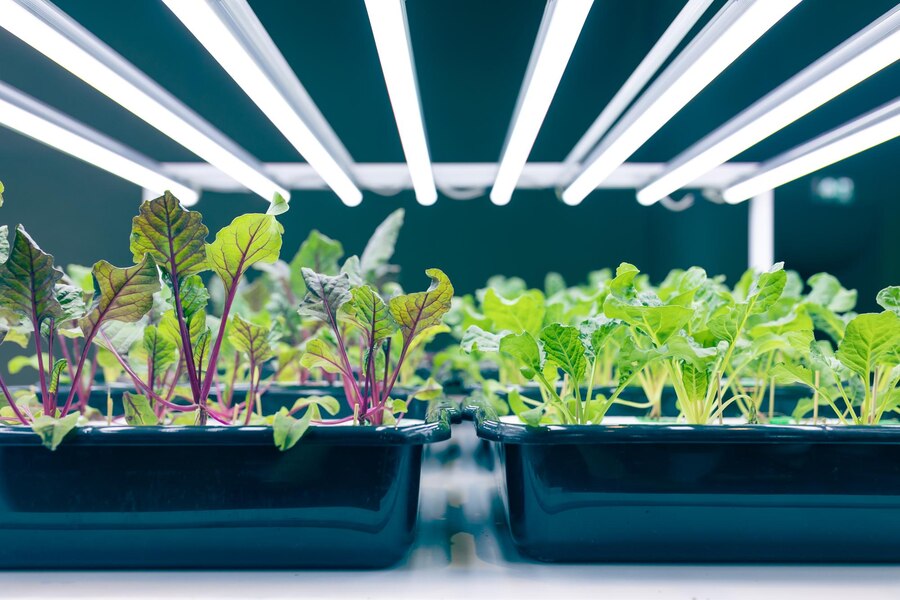
One of the common issues that Sustainable hydroponic gardeners may encounter is nutrient deficiency in plants. This occurs when the plants don’t receive adequate amounts of essential nutrients, such as nitrogen, phosphorus, potassium, and micronutrients. This can lead to stunted growth, yellowing leaves, and poor overall plant health. To troubleshoot this issue, it is essential to regularly monitor and adjust the nutrient levels in your hydroponic system. Conduct routine water and nutrient solution tests to ensure that the plants are receiving the right balance of nutrients. If deficiencies persist, consider adjusting the nutrient solution formulation or increasing the frequency of nutrient solution changes.
Another common issue in Sustainable hydroponic gardening is root rot, which is caused by excess moisture in the growing medium. This can lead to the death of plant roots and, ultimately, the demise of the entire plant. To address this issue, it is crucial to maintain proper drainage in your hydroponic system. Ensure that excess water is being effectively removed from the root zone by using well-draining growing media and implementing an appropriate irrigation system. Additionally, regular inspection and cleaning of your hydroponic system can help prevent the buildup of algae and other pathogens that contribute to root rot. Monitor the moisture levels in the growing medium and adjust your watering schedule accordingly to prevent overwatering, which can create a conducive environment for root rot to thrive.
Remember, troubleshooting common issues in Sustainable hydroponic gardening requires careful observation, regular maintenance, and timely interventions. By addressing these issues promptly, you can ensure that your hydroponic garden thrives and yields healthy plants. In the next section, we will explore the importance of seeking continuous learning and improvement in your hydroponic journey.
Key Point
Remember, troubleshooting common issues in Sustainable hydroponic gardening requires careful observation, regular maintenance, and timely interventions. By addressing these issues promptly, you can ensure that your hydroponic garden thrives and yields healthy plants. In the next section, we will explore the importance of seeking continuous learning and improvement in your hydroponic journey.
Below is a table summarizing key aspects and practices related to sustainable Sustainable hydroponics:
| Aspect/Practice | Description |
|---|---|
| Water Conservation | Utilizes water-efficient hydroponic systems, such as recirculating systems, to minimize water usage. |
| Nutrient Efficiency | Focuses on precise nutrient dosing and recycling to minimize nutrient waste and runoff. |
| Energy-Efficient Lighting | Incorporates energy-efficient LED lights and utilizes natural light when possible to reduce energy consumption. |
| Renewable Energy Sources | Implements renewable energy sources, such as solar or wind power, to meet energy needs for hydroponic systems. |
| Recycled Materials | Utilizes recycled or upcycled materials for constructing hydroponic components to reduce environmental impact. |
| Local Sourcing of Inputs | Sources inputs locally to minimize the environmental impact associated with transportation. |
| Closed-Loop Systems | Emphasizes closed-loop Sustainable hydroponic systems that reuse and recycle water and nutrients. |
| Integrated Pest Management | Adopts environmentally friendly pest control methods, reducing the reliance on chemical pesticides. |
| Regenerative Agriculture | Incorporates regenerative practices to enhance soil health and overall ecosystem resilience. |
| Community Engagement | Involves the local community, educates them about sustainable practices, and may provide fresh produce to the community. |
| Reduced Environmental Footprint | Strives to minimize overall environmental impact, including carbon footprint and resource usage. |
| Water Quality Monitoring | Regularly monitors and maintains water quality to ensure optimal conditions for plant growth and reduce the need for excess water changes. |
| Precision Farming Technologies | Utilizes advanced technologies for precise control over environmental factors, optimizing resource use. |
| Education and Outreach | Educates growers and the community about sustainable hydroponic practices and their benefits. |
| Biodiversity Conservation | Incorporates practices that support biodiversity, such as companion planting and habitat preservation. |
| Waste Reduction Strategies | Implements strategies to reduce waste, such as composting plant residues and reusing or recycling hydroponic system components. |
Adopting sustainable practices in hydroponics not only benefits the environment but also contributes to the long-term viability and success of hydroponic farming.
Seeking Continuous Learning and Improvement in Your Sustainable Hydroponic Journey
Continuous learning and improvement are essential aspects of your hydroponic journey. As with any endeavor, staying up to date with the latest techniques and advancements in hydroponics will not only expand your knowledge but also enhance the overall success of your garden. By seeking continuous learning, you can stay ahead of the curve and make informed decisions to optimize your hydroponic system.
One valuable way to learn and improve is by joining online forums, communities, or social media groups dedicated to hydroponics. Engaging in discussions with fellow gardening enthusiasts, exchanging ideas, and sharing experiences can provide valuable insights. Additionally, subscribing to reputable hydroponics magazines or newsletters will keep you informed about new research, innovations, and success stories in the field.
Another way to enhance your hydroponic knowledge is by attending workshops, seminars, and conferences conducted by experts in the industry. These events offer a great platform to learn from experienced professionals, ask questions, and network with like-minded individuals. Additionally, local gardening clubs often host informative sessions that can enrich your understanding and connect you with fellow hydroponic enthusiasts in your area.
In conclusion, seeking continuous learning and improvement in your hydroponic journey is crucial for maintaining success and staying informed about the latest developments in the field. By actively engaging in online communities, attending workshops and conferences, and staying updated with reputable sources, you can stay on the forefront of hydroponic practices and optimize your garden’s potential.
Key Point
What is Sustainable hydroponics?
Hydroponics is a method of growing plants without soil, where the plants receive their nutrients directly from a nutrient-rich water solution.
What are the benefits of using Sustainable hydroponics?
Hydroponics offers several benefits, including faster growth rates, higher yields, efficient use of water and resources, and the ability to grow plants in areas with limited space or poor soil quality.
Which Sustainable hydroponic system is best for beginners?
For beginners, it is recommended to start with a simple and user-friendly hydroponic system such as the nutrient film technique (NFT) or the deep water culture (DWC) system.
How often should I monitor and adjust nutrient levels in my hydroponic system?
It is important to regularly monitor and adjust nutrient levels in your hydroponic system, typically every 1-2 weeks, to ensure that your plants are receiving the proper balance of nutrients for healthy growth.
Can I use tap water for my hydroponic system?
Tap water can be used for hydroponics, but it is recommended to check the water quality and pH level. If the tap water contains high levels of chlorine or other contaminants, it may be necessary to use a water filter or treat the water before using it in your hydroponic system.
What are some common pests that can infest a Sustainable hydroponic garden?
Common pests in hydroponic gardens include aphids, spider mites, whiteflies, and fungus gnats. It is important to regularly inspect your plants for signs of infestation and take appropriate measures to control and prevent pest problems.
How can I conserve water and energy in my Sustainable hydroponic garden?
To conserve water, you can implement water-saving techniques such as using a recirculating system and installing a timer to control irrigation cycles. To conserve energy, you can use energy-efficient grow lights and optimize the temperature and humidity levels in your garden.
What are some common issues that may occur in Sustainable hydroponic gardening?
Common issues in hydroponic gardening include nutrient imbalances, pH fluctuations, root rot, and algae growth. Regular monitoring, proper maintenance, and timely adjustments can help prevent and manage these issues.
Where can I find additional resources to further enhance my knowledge of hydroponics?
There are various online forums, websites, books, and educational courses available that provide in-depth information and guidance on hydroponics. Some reputable sources include hydroponics associations, university extension programs, and experienced hydroponic growers.


